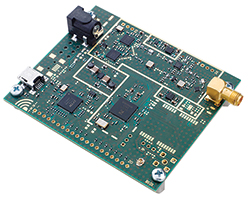
Figure 1 LoRa concentrator module from IMST GmbH.
In 2013, Semtech announced a new Long Range (LoRa®) radio technology to be operated in the public ISM radio frequency band. LoRa is able to enlarge the possible radio link distances up to more than 15 km while maintaining the radiation limits of the ISM bands. The novelty of the air interface is mainly a spread spectrum transmission technique in the RF front-end characterized by the introduction of a spreading factor, which denotes the relationship of transmission time to bit rate. The RF front-end provides 125 kHz, 250 kHz or 500 kHz signal bandwidth to enable such spreading. LoRa technology has already been successfully deployed with the Internet of Things (IoT) and machine-to-machine (M2M) applications by providing cheap and robust communication services.
Cellular systems with a coverage area of many square kilometers per infrastructure node are possible. According to the envisaged applications, tens to hundreds of end nodes can be handled within one communication cell. The central communication point in the middle of the cell — a gateway with LoRa technology inside — is capable of massive parallel receive operations on many channels, each of them individually configured for certain distances and bit rates. A typical example of the RF front-end is shown in Figure 1.
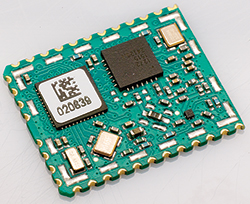
Figure 2 LoRa end node module from IMST GmbH.
Until now IoT applications have largely been driven by the communication requirements to set up an ecosystem with small sensors or actuators, in several different application domains like agriculture, industrial, logistics, smart environment, smart metering, smart grid, smart city and smart home. So far, the deployment of LoRa communication technology has been structured and organized by the LoRa Alliance™, whereby semiconductor companies, radio equipment manufacturers, firmware and software providers, mobile operators, IT companies and test houses worked together to set up a complete LoRa ecosystem, including the required quality procedures and system certifications. The specification of a first generation LoRaWAN™ standard has been completed, resulting in complete Low Power Wide Area Network (LPWAN) implementation including physical layer and medium access specifications as well as higher layer application features such as authentication, node identification, network security, application security and packet forwarding.
LoRa LOCALIZATION
It is apparent that some of the applications will benefit from the capability to detect the position of the sensor nodes in addition to setting up a communication link only. This is especially true for permanently or frequently moving objects which are tagged with a LoRa end node. Examples for such localization applications are the tracking of animals, especially livestock and pets, private fleet management of industrial vehicles, tracking of vulnerable people, the repair of robots in tunnels, anti-theft alarms and many more. All of these applications need sporadic communication.
As the production costs of LoRa based sensors (a typical example is shown in Figure 2) are often well below $10, it would be advantageous if, in addition to the communication capability, localization of the sensor would be possible without additional hardware costs as far as the sensor is concerned. Moderate cost increase in the infrastructure, however, would be acceptable because of the large coverage area of infrastructure nodes and the relatively low price of the LoRa gateways. So what is the underlying physics for the raw measurements and possible architectures built on the LoRa physical layer to enable localization?
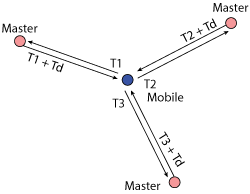
Figure 3 Localization based on round trip time.
MEASUREMENT PRINCIPLES
Several different measurement principles for the raw data required to localize an object are known. First, they can be sorted into the two different categories of exploiting time-of-flight or propagation angle of the transmitted radio signals. Most of the existing systems are based on time measurement.
All architectures with time measurements need an infrastructure with several measurement counterparts to the mobile node. One popular method is the measurement of round trip time (RTT). The architecture is shown in Figure 3. Here, a radio signal is exchanged between infrastructure node and mobile node and is echoed back. The total round trip time is measured and the delay in the echoing node is transmitted and subtracted from the result. No synchronization between nodes is needed in this case, but the communication is bidirectional and must be done sequentially one after another to all infrastructure nodes. The user has a choice as to whether the position information is present in the mobile node or in the infrastructure node since both can be the first sender, although it is easier if the mobile node initiates the echoing scheme.
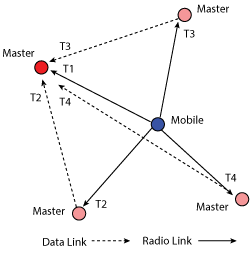
Figure 4 Localization based on time difference of arrival.
A unidirectional principle is based on synchronized time-of-arrival (ToA) measurements at the infrastructure node. The mobile node adds an absolute time stamp to the radio packet being sent to the infrastructure nodes. The infrastructure nodes measure the absolute arrival time of the packet and calculate the time-of-flight from the difference between the sent time and the arrival time. This principle needs only one transmission for all infrastructure nodes, but the clocks of all nodes, including the mobile node, must be precisely synchronized. However, having a precise clock in the mobile node is not feasible for most IoT applications.
A further improvement can be made when only the time differences at the infrastructure nodes are needed. This leads to a measurement principle which is called Time Difference of Arrival (TDoA), shown in Figure 4. In this instance, the mobile station sends a packet without time information included. The arrival time of any packet at the infrastructure node is measured and the time tag as well as the infrastructure node ID is added to the radio packet information. The packets are collected at a central infrastructure server. To compensate for the unknown absolute time at the mobile node, there needs to be extra information for the infrastructure — this means one more infrastructure node is needed in accordance with the ToA principle.
Then, the server will be able to calculate the position of the mobile node from the relative time information and the coordinates of the receiving stations. This is the principle which is applied to the LoRa localization service. The big advantage is that the radio packets sent by the mobile nodes don’t have to be changed. All that is needed is an identification number for the node, and this ID is already present in currently existing LoRaWAN implementations.
The more infrastructure nodes present, the better measurement results yielded. However, it is up to the central infrastructure server to deal with an arbitrary number of radio links, noisy measurement results, missing data, averaging in time as well as the detection of measurement errors. But these tasks are similar for the different measurement approaches, including already established systems, and thus quite well-known in research and engineering.
Localization systems are already widespread, so why should a further localization system be introduced and would it be competitive compared to existing systems that are already very refined? The answer is that requirements for IoT driven localization applications are so different that a new, additional localization technology would be a key enabler for a new application domain with disjunctive requirements and complementing architectures.
ARCHITECTURES
Geo localization applications greatly differ in their demands and architectures. The most popular system, the classic GPS, has no communication features at all. The position of the mobile node is known to the node itself, but without the help of another communication system it is not known to anybody else. Many IoT applications need a different approach: The position has to be known in the infrastructure, not in the mobile node itself. Moreover, the mobile node is small, lightweight and battery-operated. The update period of the location is often minutes or hours, not seconds.
The LoRa Geo localization feature will offer the capability for localization of people or items within an area of up to 700 km2 utilizing a cheap tag in addition to the communication capability. A key enabler will be the deployment of the infrastructure, since this will account for the main additional costs compared to the pure communication features. Infrastructure may be deployed e.g., by the big telecom operators (typically where their mobile cellular infrastructure is located since cell sizes are very similar). Other markets are driven by private installations in industry, agriculture, and other segments with large private areas. A big advantage here is that the communication technology is already established, so that the introduction of the localization feature offers an add-on. However, it is an add-on with complex system architecture and a high implementation challenge as it is a completely new approach.
Advantages compared to existing solutions can be seen in Table 1. Compared to GPS, the indoor capability, device cost and communication ability are major advantages. Compared to RFID, the range is much higher and the infrastructure density and cost is much lower. Related to mobile cellular services, no air time costs, cheap infrastructure and low device cost are the main advantages. Further advantages are the long battery life compared to GPS and mobile cellular services.
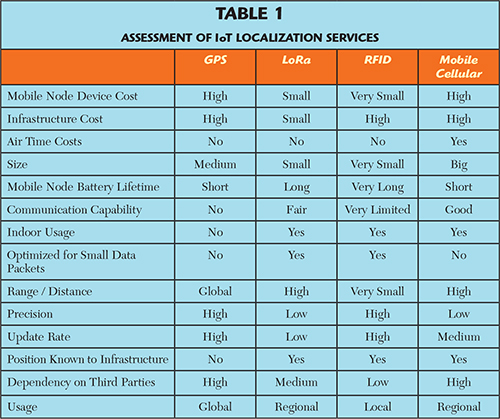
Application potential and a unique selling point is offered by the merging of communication and localization, but also in the special overall combination of the features listed in Table 1, which distinguishes the application domain from the other candidate systems. These features are a unique combination of capabilities satisfying a variety of requirements required by typical IoT applications that other localization services are not able to cope with. Investments would only be needed for the evolution of the technology, since ‘generation one’ LoRa communication technology has already been developed and standardized. This lowers the hurdle for implementation compared to a completely new development and makes an attractive business case. Customers already using ‘generation one’ equipment are familiar with the technology and migration on the end node side is easy to handle and bears no additional hardware costs.
Implementation challenges are present mostly in the setup of the infrastructure. Due to the chosen TDoA measurement principle, the clocks in the infrastructure nodes have to be synchronized precisely. In outdoor solutions an additional GPS module can be used to provide the position of the infrastructure node (which is needed to calculate positions of the mobile nodes) and accurate time base with a resolution of about 1 ns (although that is not possible in indoor installations). In this case, accurate timings may be achieved with the Precision Time Protocol (PTP) of the Ethernet specification when the device can be connected to another source of time information and the coordinates of the infrastructure must be found with additional help, such as diagrams of the building.
Not only do technical challenges have to be solved, but the infrastructure has to be changed — at least on the gateway side. LoRa infrastructure gateways which are capable of localization will need different hardware architecture compared to existing communication infrastructure of the first generation and their complexity will be significantly higher.
The implementation of estimation algorithms and position solvers is already going on and might not be such a problem. Some companies already offer libraries exploiting the raw localization information to yield the positions of mobile nodes.
EXPECTED PERFORMANCE
The precision of radio localization systems measuring round trip times or time of arrival depends mainly on the bandwidth of the radio waves used. The reason is that not only the signal traveling the direct path from sender to receiver is present at the receiver input, but so too can be one or more echoes, which are caused by reflections from items or obstacles between senders and receivers. When the signal bandwidth is limited, these echoes merge with each other and cannot be separated. The achievable performance depends on the statistics of the echoes, the signal-to-noise ratio of the received signal, the overall integration time, and the bandwidth and spectral characteristics of the transmit signal.
When B is the bandwidth of the radio transmit signal, the achievable temporal resolution is in the order of 1/B with an estimator using a correlation approach, which is the basic mechanism for TDoA estimations. For a LoRa system with 500 kHz bandwidth, this results in precision of about 600 m. This number can be interpreted as a worst case threshold. When the signal of the direct path is significantly stronger than the signal of the echoes, the results will be better. With other estimators, which exploit the radio channel information (the channel delay spread or, better, an estimate of the channel impulse response) in addition to the pure signal correlation characteristics, better results can also be achieved. However, LoRa based localization will never directly compete with the precision of GPS, which is several meters down to centimeters when applying differential GPS. This will have to be reflected in the application domain.
CONCLUSION
LoRa based localization will complement the traditional localization systems adequately while satisfying the new set of application requirements of IoT implementations that have not been matched by traditional localization techniques so far. No additional costs for air time or end nodes will occur, the devices are cheap, and battery time is much better than with traditional localization systems. However, users with diverse applications should be aware of the physical limits that will allow for only moderate precision and update rate. Whenever applications only need limited performance of a narrowband localization system, LoRa based localization will be a good choice.
Note: The LoRa® name and associated logo are registered trademarks of Semtech Corporation. LoRaWAN™ is a trademark of the LoRa Alliance.
